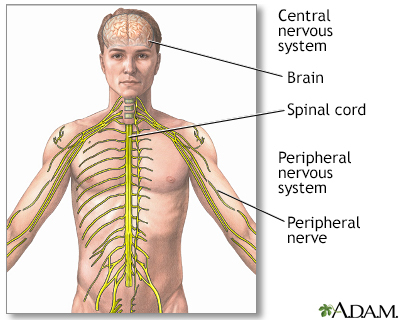Vehicle Heat Safety for Children
Unfortunately, child deaths and heat-related illness, like dying from heatstroke in a hot car, increase during summer. Since 1998, more than 950 children have…

Update your location to show providers, locations, and services closest to you.
Hyperactivity means having increased movement, impulsive actions, a shorter attention span, and being easily distracted.
Activity - increased; Hyperkinetic behavior
Hyperactive behavior usually refers to constant activity, being easily distracted, impulsiveness, inability to concentrate, aggressiveness, and similar behaviors.
Typical behaviors may include:
Hyperactivity is not easily defined. It often depends on the observer. Behavior that seems excessive to one person may not seem excessive to another. But certain children, when compared to others, are clearly far more active. This can become a problem if it interferes with school work or making friends.
Hyperactivity is often considered more of a problem for schools and parents than it is for the child. But many hyperactive children are unhappy, or even depressed. Hyperactive behavior may make a child a target for bullying, or make it harder to connect with other children. Schoolwork may be more difficult. Kids who are hyperactive are frequently punished for their behavior.
Excessive movement (hyperkinetic behavior) often decreases as the child grows older. It may disappear entirely by adolescence.
Conditions that may lead to hyperactivity include:
A child who is normally very active often responds well to specific directions and a program of regular physical activity. But, a child with ADHD may have a hard time following directions and controlling impulses.
Contact your child's health care provider if:
The provider will perform a physical exam of your child and ask about your child's symptoms and medical history. Examples of questions include whether the behavior is new, if your child has always been very active, and whether the behavior is getting worse.
The provider may recommend a psychological evaluation. There may also be a review of the home and school environments.

Chaves-Gnecco D, Feldman HM. Developmental/behavioral pediatrics. In: Zitelli BJ, McIntire SC, Nowalk AJ, Garrison J, eds. Zitelli and Davis' Atlas of Pediatric Physical Diagnosis. 8th ed. Philadelphia, PA: Elsevier; 2023:chap 3.
Morrow C. Psychiatry. In: Kleinman K, Mcdaniel L, Molloy M, eds. The Harriet Lane Handbook. 22nd ed. Philadelphia, PA: Elsevier; 2021:chap 24.
Urion DK. Attention-deficit/hyperactivity disorder. In: Kliegman RM, St. Geme JW, Blum NJ, Shah SS, Tasker RC, Wilson KM, eds. Nelson Textbook of Pediatrics. 21st ed. Philadelphia, PA: Elsevier; 2020:chap 49.
Unfortunately, child deaths and heat-related illness, like dying from heatstroke in a hot car, increase during summer. Since 1998, more than 950 children have…

March 2, 2023
A team led by a University of Florida Health scientist last month landed what it believes is the first National Institutes of Health grant ever awarded…
College of Medicine, +2 more
